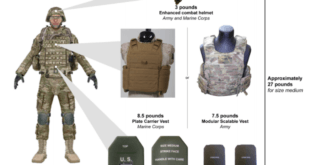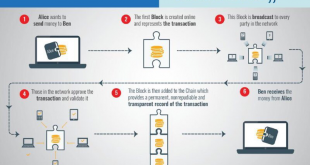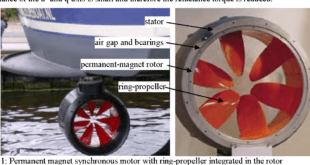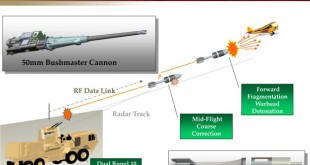The past few decades have seen explosive growth in development and training of AI systems, which are now embodied in digital computing processes spanning several key industries. One area that has benefited from AI, and specifically Machine Learning (ML) techniques and statistical methods, is the area of Human Language Technology …
Read More »Militaries looking for anti-laser weapon defences as laser DEW threats to airline pilots, soldiers and military vehicles is rising
Laser attacks targeting pilots and air crews are a major concern across the world with most attacks reported to take place during take-off and landing. According to figures from the US Federal Aviation Authority, there were 6,753 laser illuminations reported in 2017. Until recently, the expense of lasers had limited their use …
Read More »Rising conflicts and terrorist threats driving large growth in Military Personal Protective Equipment (PPE)
Personal protective equipment (PPE) includes items that must be worn in combat and in training. Military personal protective equipment has become a crucial and standard element of soldier equipment. Increasing awareness about safety and security of military personals along with initiative by government in procurement of personal protective wears is …
Read More »Global threat of landmines and IED that kill thousands of people every year require new technologies for detection
Landmines are a global threat. Several countries suffer from the existence of millions of buried landmines in their territories. These landmines have indefinite life, and may still cause horrific personal injuries and economic dislocation for decades after a war has finished. Landmines came into widespread use in the Second World …
Read More »DARPA SSPARC developed spectrum-sharing technologies between military radars and communication systems for assured access to contested electromagnetic environment
Spectrum congestion is a growing problem. It increasingly limits operational capabilities due to the increasing deployment and bandwidth of wireless communications, the use of net-centric and unmanned systems, and the need for increased flexibility in radar and communications spectrum to improve performance and to overcome sophisticated countermeasures. Ongoing wireless …
Read More »Countries race to employ Blockchain, the virtual currencies technology, for tamper-proof military systems and cybersecurity
Blockchain is a transformative technology for the two billion people in the world currently underserved by financial institutions. The technology has the potential to enhance privacy, security and freedom of conveyance of data. Blockchain is based on open, global infrastructure, decentralized public ledger of transactions that no one person or …
Read More »Propulsion motors are enabling stealthy warships and submarines propelled with an electric propulsion system
Navies of various countries have announced making their warships and submarines propelled with an electric propulsion system. Instead of driving the ship’s propellers directly, diesel engines turn electric generators, which in turn power electric motors that drive the propellers. This arrangement enables diesels to be placed away from the shafts and …
Read More »Supercomputers can assist in Cyber Security by Identifying threats, detecting anomalous behaviour and finding software vulnerabilities
Supercomputers have become essential for National Security, for decoding encrypted messages, simulating complex ballistics models, nuclear weapon detonations and other WMD, developing new kinds of stealth technology, and cyber defence/ attack simulation. Because of the expense, supercomputers are typically used for the most intensive calculations, like predicting climate change, or …
Read More »Air Force testing tactical data links gateway for communications between F-22 and F-35 aircraft enabling Network centric systems
NCW is theory of warfare in the information age which hypothesizes that forces which are networked will outperform forces that are not. NCW is an ‘integration of sensors, decision-makers, weapons platforms and support capabilities to enable agility’ providing ‘interoperability and collaboration within and between services’. According to U.S. Defense …
Read More »Countries upgrading Counter Rocket, Artillery, and Mortar systems to counter threats like drones, helicopters, fixed-wing aircraft and cruise missiles
As the threat for Rocket, Artillery, and Mortar (RAM) increases around the world, the need for a system to detect and alert Soldiers of incoming rounds for military locations becomes vital to mission success and force survivability. Military installations such as forward operating bases are vulnerable to rocket, artillery and …
Read More » International Defense Security & Technology Your trusted Source for News, Research and Analysis
International Defense Security & Technology Your trusted Source for News, Research and Analysis









